Showing Spotlights 1545 - 1552 of 2783 in category All (newest first):
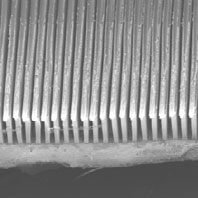 Heat has become one of the most critical issues in computer and semiconductor design. Three factors are playing the most important role in a microscale heat sink cooling system: the thermal conductivity of the material of the cooling fins; the heat exchange area of the cooling fins; and the convection between cooling fins and ambient. Carbon nanotubes satisfy the first two factors very well. They possess very high thermal conductivity and very high surface/volume ratio among other outstanding physical properties such as light, high current carrying capacity, excellent mechanical strength, etc. To reduce high temperatures, today's heat sinks are attached to the back of the chips to pull thermal energy away from the microprocessor and transfer it into the surrounding air. Researchers have now demonstrated the application of interface-enhanced CNTs as on-chip cooling fins in a microchannel heat sink.
Heat has become one of the most critical issues in computer and semiconductor design. Three factors are playing the most important role in a microscale heat sink cooling system: the thermal conductivity of the material of the cooling fins; the heat exchange area of the cooling fins; and the convection between cooling fins and ambient. Carbon nanotubes satisfy the first two factors very well. They possess very high thermal conductivity and very high surface/volume ratio among other outstanding physical properties such as light, high current carrying capacity, excellent mechanical strength, etc. To reduce high temperatures, today's heat sinks are attached to the back of the chips to pull thermal energy away from the microprocessor and transfer it into the surrounding air. Researchers have now demonstrated the application of interface-enhanced CNTs as on-chip cooling fins in a microchannel heat sink.
Jan 13th, 2012
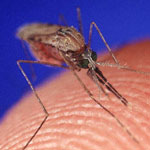 Repellents play an important role in protecting humans from insect bites. An effective and safe repellent is useful in reducing human-vector contact, and thereby helps in the interruption of vector-borne disease transmission - mosquito bites can cause causes diseases like dengue and malaria. There are two types of repellents - synthetic and natural. DEET and DEPA are two of the best studied and most common active ingredient in insect repellents. Researchers in India have developed a cream of microencapsulated DEPA with two natural biodegradable polysaccharides which increases the efficiency of mosquito repellency from 6 hours to 12 hours. No DEPA-based formulation with up to 12 hours of protection time has been reported so far.
Repellents play an important role in protecting humans from insect bites. An effective and safe repellent is useful in reducing human-vector contact, and thereby helps in the interruption of vector-borne disease transmission - mosquito bites can cause causes diseases like dengue and malaria. There are two types of repellents - synthetic and natural. DEET and DEPA are two of the best studied and most common active ingredient in insect repellents. Researchers in India have developed a cream of microencapsulated DEPA with two natural biodegradable polysaccharides which increases the efficiency of mosquito repellency from 6 hours to 12 hours. No DEPA-based formulation with up to 12 hours of protection time has been reported so far.
Jan 12th, 2012
 This article summarizes the progress, products outlook, advantages, and limitations of nanocomposites in the automotive industry. Polymer nanocomposites represent a new class of multiphase materials containing dispersion of nano-sized filler materials such as nanoparticles, nanoclays, nanotubes, nanofibers etc. within the polymer matrices. Owing to their nanoscale size features and very high surface-to-volume ratios, they possess unique combination of multifunctional properties not shared by their more conventional composite counterparts reinforced with micro-sized fillers. These multifunctional nanocomposites not only exhibit excellent mechanical properties, but also display outstanding combination of optical, electrical, thermal, magnetic and other physico-chemical properties.
This article summarizes the progress, products outlook, advantages, and limitations of nanocomposites in the automotive industry. Polymer nanocomposites represent a new class of multiphase materials containing dispersion of nano-sized filler materials such as nanoparticles, nanoclays, nanotubes, nanofibers etc. within the polymer matrices. Owing to their nanoscale size features and very high surface-to-volume ratios, they possess unique combination of multifunctional properties not shared by their more conventional composite counterparts reinforced with micro-sized fillers. These multifunctional nanocomposites not only exhibit excellent mechanical properties, but also display outstanding combination of optical, electrical, thermal, magnetic and other physico-chemical properties.
Jan 11th, 2012
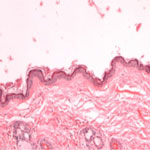 Nitric oxide (NO) is known to possess impressively broad antimicrobial activity due to both its inherent ability to inhibit growth and kill pathogens as well as its function as a potent immunostimulatory signaling molecule. Research data shows that NO is a potentially powerful therapeutic for serious skin and soft-tissue infections, including MRSA (methicillin-resistant S. aureus) infected wounds. However, as a highly reactive gas, NO has proven difficult to deliver in a convenient and cost effective therapeutic format. This limitation has largely precluded its routine use, even in hospital settings. In new work, researchers have now demonstrated the potential application of NO as an antimicrobial agent in the setting of skin and soft tissue infections.
Nitric oxide (NO) is known to possess impressively broad antimicrobial activity due to both its inherent ability to inhibit growth and kill pathogens as well as its function as a potent immunostimulatory signaling molecule. Research data shows that NO is a potentially powerful therapeutic for serious skin and soft-tissue infections, including MRSA (methicillin-resistant S. aureus) infected wounds. However, as a highly reactive gas, NO has proven difficult to deliver in a convenient and cost effective therapeutic format. This limitation has largely precluded its routine use, even in hospital settings. In new work, researchers have now demonstrated the potential application of NO as an antimicrobial agent in the setting of skin and soft tissue infections.
Jan 4th, 2012
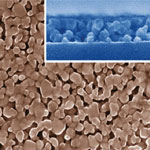 Vanadium dioxide (VO2) has long been recognized as a a material of significant technological interest for optics and electronics and a promising candidate for making 'smart' windows: it can transition from a transparent semiconductive state at low temperatures, allowing infrared radiation through, to an opaque metallic state at high temperatures, while still allowing visible light to get through. So far, VO2 hasn't been considered to be particularly suited for large-scale practical smart-window applications due to its low luminous transmittance and solar modulating ability. Researchers in China have now developed a process that can prepare VO2 thin-films with a controllable polymorph and morphology. Their results show that with increased porosity and decreased optical constants the performance of the VO2 films is enhanced, leading to a higher transmittance of visible light and improved solar modulating ability.
Vanadium dioxide (VO2) has long been recognized as a a material of significant technological interest for optics and electronics and a promising candidate for making 'smart' windows: it can transition from a transparent semiconductive state at low temperatures, allowing infrared radiation through, to an opaque metallic state at high temperatures, while still allowing visible light to get through. So far, VO2 hasn't been considered to be particularly suited for large-scale practical smart-window applications due to its low luminous transmittance and solar modulating ability. Researchers in China have now developed a process that can prepare VO2 thin-films with a controllable polymorph and morphology. Their results show that with increased porosity and decreased optical constants the performance of the VO2 films is enhanced, leading to a higher transmittance of visible light and improved solar modulating ability.
Dec 28th, 2011
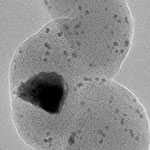 A number of parameters are known to affect the synthesis of carbon nanomaterials, such as the composition and size of the catalysts, type of hydrocarbon gas, temperature, and reaction time. Different carbon nanomaterials having various carbon atomic configurations demonstrate different physical and chemical properties. As a result, it is critical to synthesize carbon nanomaterials with controlled morphology and internal structures for their potential applications as building blocks for nanoscale electronics and photonics, catalyst supports for fuel cells, non-viral carriers for delivering biomolecules into cells, biomedical imaging, and additives for reinforced composite materials. In order to overcome these barriers, researchers need to investigate the interactions between catalysts and carbon nanomaterials to understand how the catalyst facilitate the growth of carbon nanomaterials and, thereby, obtain carbon nanomaterials with controlled properties through tailoring of their catalyst parameters.
A number of parameters are known to affect the synthesis of carbon nanomaterials, such as the composition and size of the catalysts, type of hydrocarbon gas, temperature, and reaction time. Different carbon nanomaterials having various carbon atomic configurations demonstrate different physical and chemical properties. As a result, it is critical to synthesize carbon nanomaterials with controlled morphology and internal structures for their potential applications as building blocks for nanoscale electronics and photonics, catalyst supports for fuel cells, non-viral carriers for delivering biomolecules into cells, biomedical imaging, and additives for reinforced composite materials. In order to overcome these barriers, researchers need to investigate the interactions between catalysts and carbon nanomaterials to understand how the catalyst facilitate the growth of carbon nanomaterials and, thereby, obtain carbon nanomaterials with controlled properties through tailoring of their catalyst parameters.
Dec 23rd, 2011
 Curcumin is the star bioactive component responsible for turmeric's antioxidant, anti-inflammatory and anticancer properties. Recently, it has emerged as one of the most potent chemo-preventive and chemotherapeutic agents. Consequently, there has been a steep rise in the number of research publications and patents starting from the year 2000 onwards. This article presents the findings of a literatre survey and patent analysis on nano-enabled curcumin. There is an upward trend in patenting and publishing activities, which is especially noteworthy from 2007 onwards. One intriguing fact is that the patenting activity is showing a dominating trend in comparison with the scientific research activity suggesting the growing commercial importance of nano-enabled curcumin.
Curcumin is the star bioactive component responsible for turmeric's antioxidant, anti-inflammatory and anticancer properties. Recently, it has emerged as one of the most potent chemo-preventive and chemotherapeutic agents. Consequently, there has been a steep rise in the number of research publications and patents starting from the year 2000 onwards. This article presents the findings of a literatre survey and patent analysis on nano-enabled curcumin. There is an upward trend in patenting and publishing activities, which is especially noteworthy from 2007 onwards. One intriguing fact is that the patenting activity is showing a dominating trend in comparison with the scientific research activity suggesting the growing commercial importance of nano-enabled curcumin.
Dec 22nd, 2011
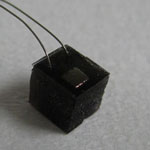 Implantable devices like pace makers or neurostimulators are powered by lithium batteries whose service life is as low as 10 years. Hence, many patients must undergo a major surgery to check the battery performance and replace the batteries as necessary. A team in Japan has now reported an interesting strategy that would keep using batteries but provides a mechanism for remotely recharging them from outside the body by converting laser light into thermal energy and subsequently to electricity. The main purpose of this study was to show that it is possible to remotely control electrical energy generation by laser light that can be transmitted through living tissue in order to target various bionic applications implanted in the body.
Implantable devices like pace makers or neurostimulators are powered by lithium batteries whose service life is as low as 10 years. Hence, many patients must undergo a major surgery to check the battery performance and replace the batteries as necessary. A team in Japan has now reported an interesting strategy that would keep using batteries but provides a mechanism for remotely recharging them from outside the body by converting laser light into thermal energy and subsequently to electricity. The main purpose of this study was to show that it is possible to remotely control electrical energy generation by laser light that can be transmitted through living tissue in order to target various bionic applications implanted in the body.
Dec 20th, 2011
 Heat has become one of the most critical issues in computer and semiconductor design. Three factors are playing the most important role in a microscale heat sink cooling system: the thermal conductivity of the material of the cooling fins; the heat exchange area of the cooling fins; and the convection between cooling fins and ambient. Carbon nanotubes satisfy the first two factors very well. They possess very high thermal conductivity and very high surface/volume ratio among other outstanding physical properties such as light, high current carrying capacity, excellent mechanical strength, etc. To reduce high temperatures, today's heat sinks are attached to the back of the chips to pull thermal energy away from the microprocessor and transfer it into the surrounding air. Researchers have now demonstrated the application of interface-enhanced CNTs as on-chip cooling fins in a microchannel heat sink.
Heat has become one of the most critical issues in computer and semiconductor design. Three factors are playing the most important role in a microscale heat sink cooling system: the thermal conductivity of the material of the cooling fins; the heat exchange area of the cooling fins; and the convection between cooling fins and ambient. Carbon nanotubes satisfy the first two factors very well. They possess very high thermal conductivity and very high surface/volume ratio among other outstanding physical properties such as light, high current carrying capacity, excellent mechanical strength, etc. To reduce high temperatures, today's heat sinks are attached to the back of the chips to pull thermal energy away from the microprocessor and transfer it into the surrounding air. Researchers have now demonstrated the application of interface-enhanced CNTs as on-chip cooling fins in a microchannel heat sink. 
 Subscribe to our Nanotechnology Spotlight feed
Subscribe to our Nanotechnology Spotlight feed





